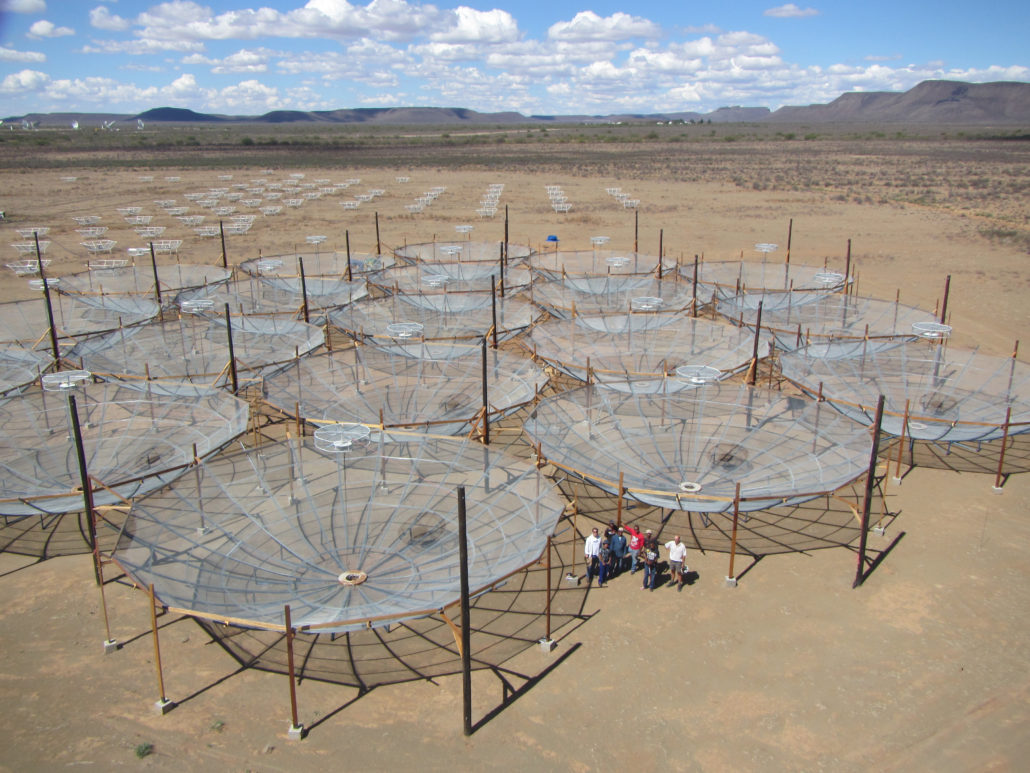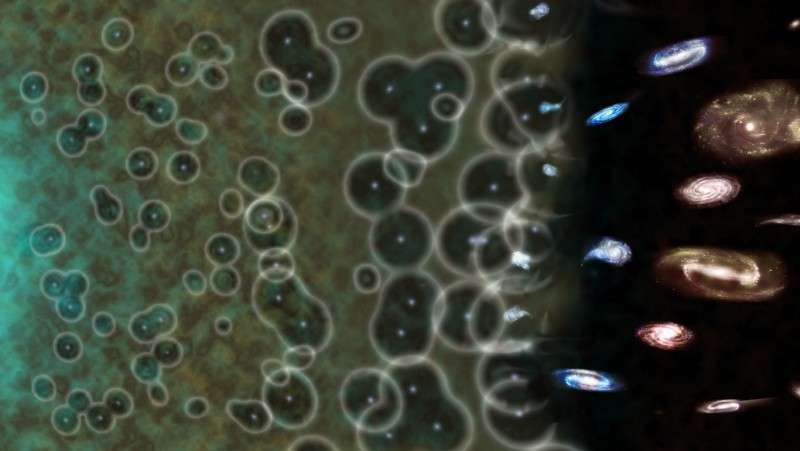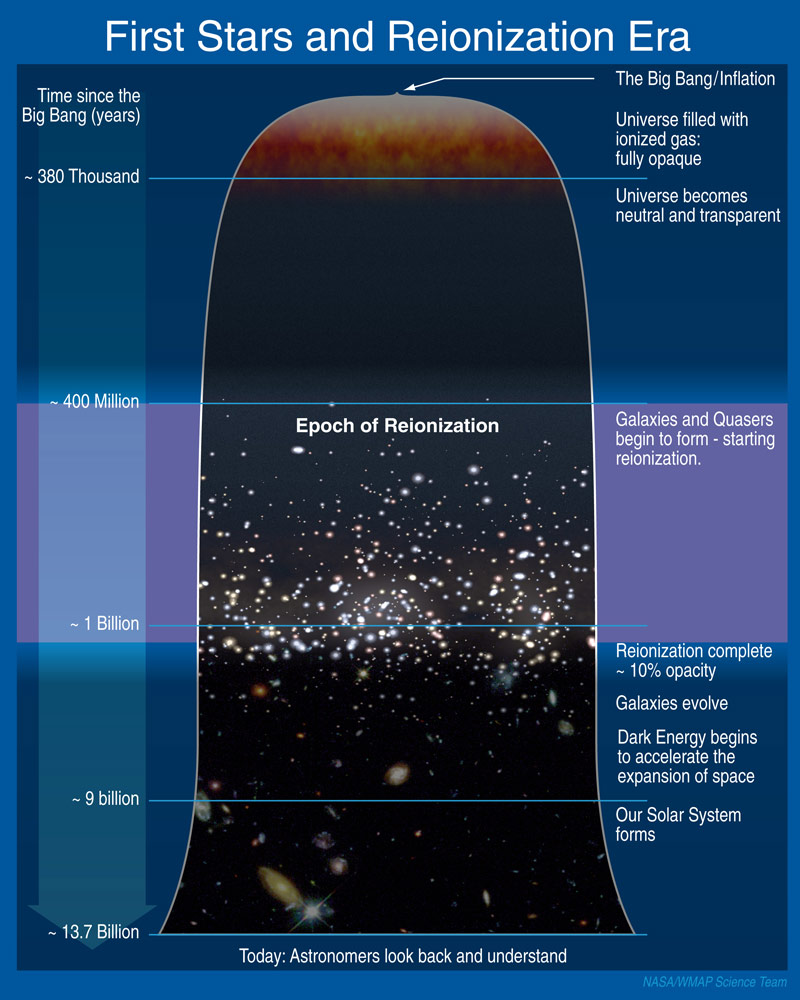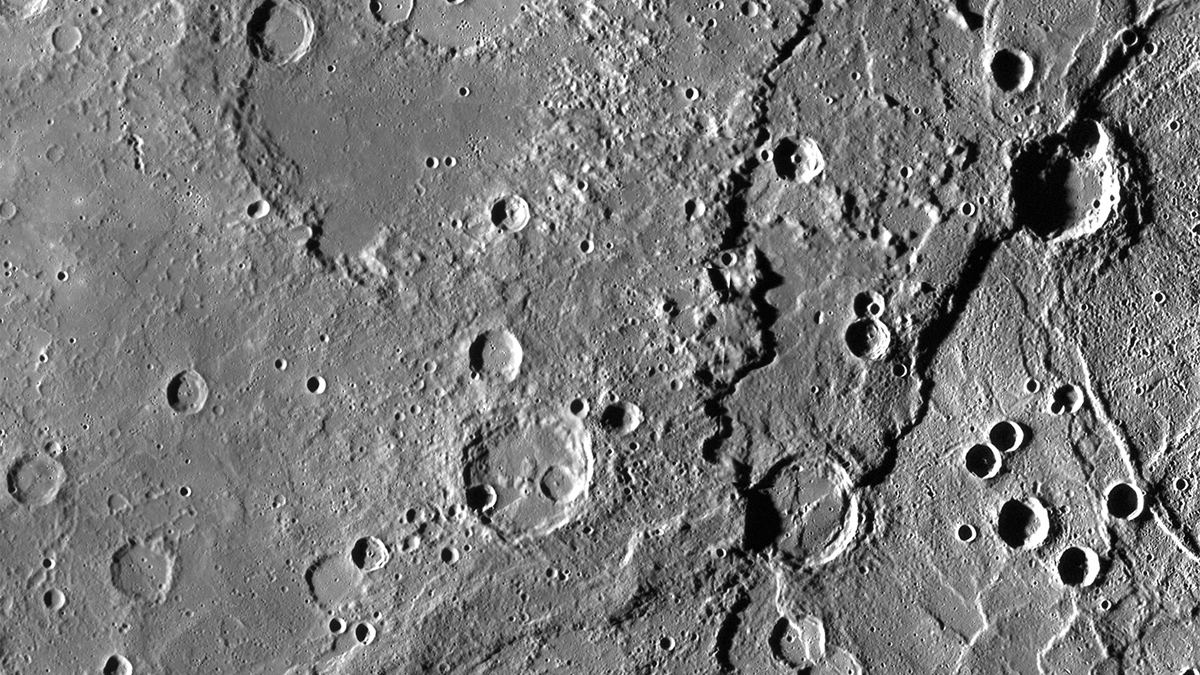Telescope Eyeing Universe's First Stars Gets (Another) Big Boost

Throughout history, groups of people around the world have created stories about how the first stars arrived in the night sky. Some say the stars were born from their mother, the moon, or that they are the souls of animals that ventured up into the great, gaping darkness above.
It's only in recent history that humans have gained the ability to find out the real story of the very first generations of stars in the universe. The HERA radio telescope is one of the instruments that will allow humans to read this chapter in cosmic history. HERA, which stands for Hydrogen Epoch of Reionization Array, will investigate a period in time when the very first generations of stars and galaxies formed, and totally altered the cosmic landscape.
A newly announced $5.8 million grant from the Gordon and Betty Moore Foundation will allow the HERA team to increase the number of antennas in the array from 240 to 350, boosting the telescope's collecting area by almost 50 percent, according to a statement from the Massachusetts Institute of Technology (MIT), home to scientists in the HERA collaboration. A $9.5 million grant from the National Science Foundation in 2016 helped the HERA team increase the number of antennas from 19 to 240. [These Are the Biggest Telescopes on Earth]
The team will also make modifications to the telescope's instrumentation, which will allow scientists to look even further back in time, to before there were enough stars to form galaxies, when the very first population of very massive objects began to blossom. Those early objects may have included a generation of gigantic stars, hundreds of times the mass of the sun, or, possibly, a population of black holes, according to Jacqueline Hewitt, a professor of physics at MIT, who is overseeing HERA's new grant.
The further away an object is from Earth, the longer the light from that object takes to reach this planet. Some objects are so far away that the light captured by telescopes from those objects was emitted billions of years ago; that means scientists are directly observing the ancient universe.
"I think it's sort of remarkable we're designing instruments so we can detect what was happening 13 billion years ago," said Hewitt.
HERA's level of sensitivity — which is one of the things that allows the instrument to collect the faint traces of light from such distant sources — will get even higher with the new grant.
Breaking space news, the latest updates on rocket launches, skywatching events and more!
Inside the very first stars, simple hydrogen atoms were fused into things like helium, carbon, oxygen and nitrogen. These cosmic furnaces kicked off a tradition of creating more-complex chemical elements than present in the material that formed those stars. As a result, for a while, each successive generation of stars grew out of richer cosmic soil than the one before it.
The production of heavier and heavier elements by subsequent generations of stars transformed the universe into a place where new and exotic objects could grow, including a rocky planet called Earth, and the life-forms that call it home.
HERA will provide some clues about the identities and characteristics of those first objects, but the primary focus of the collaboration is to look at how those objects affected their environment. By learning about the change that the first stars and galaxies imposed on the universe, Hewitt said, HERA will help scientists figure out if the larger picture — the story — that they've pieced together about the emergence of luminous objects in the cosmos is correct. [Planck Satellite Brings Early Universe Into Focus]

When the lights came on
The radio antennas that will make up HERA are each 14 meters (42 feet) wide, or about the length of a city bus. With 350 antennas placed side by side, the total square footage of the array is over 615,000 square feet [57,000 square meters], or the area of more than 10 football fields (including end zones). Located at the South African Karoo Astronomy Reserve, the antennas will all work in synch to effectively create one massive telescope. The initial 19 antennas have begun taking data, and the full 350-antennea array is expected to be operating by September 2019, Hewitt said.
HERA has also been dubbed a precursor instrument to the Square Kilometer Array, which is scheduled to be the largest radio telescope ever built.
The "H" in HERA stands for hydrogen, and the instrument's antennas are tuned to detected a wavelength of light emitted by hydrogen atoms. This is known as the "21-centimeter line" (in reference to the size of the wavelength — 21 centimeters).
Hydrogen, the very first element listed on the periodic table, is the most basic atom in the universe. The majority of the neutral hydrogen atoms found in nature contain a positively charged proton and a negatively charged electron that together bear no net charge (hence, are neutral). (Neutral hydrogen atoms can also contain neutrons, but this is a much less common arrangement.)
Because of its chemical simplicity, hydrogen has always been the most prevalent kind of atom in the universe. By about 400 million years after the Big Bang (thought to have occurred about 13.8 billion years ago), when the cosmos had cooled enough for atoms to form, the universe contained very, very few other kinds of atoms.
Scientists think that when the first stars were born, these luminous objects and the galaxies they formed eventually pumped out X-rays and ultraviolet radiation that ripped electrons from their proton partners. This left what is called ionized hydrogen. Eventually, the majority of the hydrogen atoms in the universe became ionized.
This era, when most of the hydrogen in the universe underwent a massive physical transformation, is known the epoch of reionization. "Ionization" refers to the removal of an electron from an atom; the "re" is there because the protons and neutrons were in an uncoupled state even earlier in the universe's history.

A slow roast
The reionization of hydrogen in the universe didn't occur like the flipping on of a light switch; it wasn't instantaneous and probably didn't happen at the same rate across the cosmos, said Anna Frebel, an assistant professor of physics at MIT who studies stars and galaxies that formed in the very early days of the universe.
Without any detailed observations of what reionization looked like, many models of the early universe "just kind of pick one time and say, 'The universe is reionized now!' — like it was kind of an instant," Febel told Space.com in an interview. In reality, all of that ionizing radiation probably zapped the cosmos in a more uneven way, Frebel said.
"It's like when you make french fries, you just put them in the fryer and it goes really fast, instead of putting them in the oven, where they kind of slowly roast and you have to stir the pot a little so it's even," Frebel said. The epoch of reionization was "probably more like the slow roast.
"What HERA's going to do is create map of how the slow roasting happened," Frebel said. "And that's the exciting part of it. That will give us details and insights into how long [reionization] took in a certain area and how big these areas were."
In fact, HERA should be able to see the ionization of the hydrogen gas caused by some of the individual galaxies in the early universe, Hewitt said. The regions of ionized hydrogen will look sort of like bubbles in the HERA data, Hewitt said.
"They are these spherical regions around galaxies where the hydrogen has been ionized," Hewitt said. "From the point of view of the 21-centimeter line, it's as if the hydrogen is just not there. So, in our data, it looks like empty bubbles surrounding quasars or galaxies. … And there should be some big bubbles out there that we should be able to see now with this kind of collecting area."
This capability is made possible with the addition of the new antennas, which will ultimately increase HERA's sensitivity, the statement from MIT said.
The James Webb Space Telescope, scheduled to be the largest space-based infrared telescope in history, will be able to see some of the light radiated from those very early galaxies; so where HERA sees a bubble, Webb should see a bright source of light, Hewitt said. This could serve as a way to check HERA's results, Hewitt added.

Things start to heat up
With the additional antennas, as well as modifications to the antenna design, the HERA team members are also trying to look further back in time, and even study the neutral hydrogen before ionization occurred, Hewitt said. Radiation from those early sources would have heated up those hydrogen atoms before it fully liberated the electrons. HERA scientists will look for a "heat signature" in the hydrogen that could reveal clues about the radiating objects.
The signature could, for example, provide some idea of just how massive those first stars could become. (It's only the smaller, cooler stars from this early generation that are still around. Massive stars live relatively short lives.) A star's size can reveal information about how quickly the object cooled, which is linked to its composition, which would reveal something about the chemical composition of the universe at the time, Hewitt said. Some hypotheses also suggest that the first objects to form may have been black holes, which would leave a different heat signature, she said. (A black hole would produce X-rays by accelerating a disk of gas and material around it; these accelerating particles would produce photons.)
Some research has been done to deduce the chemical makeup of very early galaxies, based on observations of very bright, distant galaxies, or of very old stars that formed in the early universe and are still around today, Hewitt said. The earliest generation of stars formed out of a cosmic soup that had almost none of the chemical variety that exists today. The fiery engine inside those stars, as well as the violent explosion of the very massive ones that died, fused atoms together to create heavier atoms. Those studies of old stars or distant galaxies have shown that "certain elements were less abundant in the past, but we haven't really been able to look at that carefully," Hewitt said.
HERA will not be able to directly analyze the chemical composition of those early objects (such work is done with a technique called spectroscopy), but Hewitt said it will be possible to learn something about the characteristics of those early objects by studying their interaction with the hydrogen that surrounded them.
"We don't really know, but we believe in both cases there will be X-rays produced that will heat the hydrogen [before ionizing it]," Hewitt said. "And so we think we can look for that signature, and the details of that signature will be different for a generation of black holes or a generation of massive stars and galaxies. So we think we can distinguish between some of these different ideas for how the very first objects formed."
That's the bigger question that HERA may help answer — what caused those first objects to form? Why did the material in the universe start to clump together, instead of remaining smooth?
Something created imperfections in the universe that caused material to clump together, and eventually form massive objects. (The leading hypothesis is that ripples in space-time caused by a phenomenon known as inflation made the universe rapidly expand.) Without those imperfections, it's possible the cosmos would still be a smooth sea of simple particles, devoid of stars, galaxies, planets and humans.
If HERA succeeds, this radio telescope array in South Africa could reveal new information about the slow roast of universal reionization, the identities of the very first massive objects, the evolution of the cosmic ingredients list and perhaps even clues about the mechanism behind the formation of the first massive objects.
All this information will help flesh out the true and complex story of how the very first stars appeared in the sky. HERA is going to provide a direct way to check "whether this whole picture we have is correct," Hewitt said.
Follow Calla Cofield @callacofield. Follow us @Spacedotcom, Facebook and Google+. Original article on Space.com .
Join our Space Forums to keep talking space on the latest missions, night sky and more! And if you have a news tip, correction or comment, let us know at: community@space.com.

Calla Cofield joined Space.com's crew in October 2014. She enjoys writing about black holes, exploding stars, ripples in space-time, science in comic books, and all the mysteries of the cosmos. Prior to joining Space.com Calla worked as a freelance writer, with her work appearing in APS News, Symmetry magazine, Scientific American, Nature News, Physics World, and others. From 2010 to 2014 she was a producer for The Physics Central Podcast. Previously, Calla worked at the American Museum of Natural History in New York City (hands down the best office building ever) and SLAC National Accelerator Laboratory in California. Calla studied physics at the University of Massachusetts, Amherst and is originally from Sandy, Utah. In 2018, Calla left Space.com to join NASA's Jet Propulsion Laboratory media team where she oversees astronomy, physics, exoplanets and the Cold Atom Lab mission. She has been underground at three of the largest particle accelerators in the world and would really like to know what the heck dark matter is. Contact Calla via: E-Mail – Twitter
